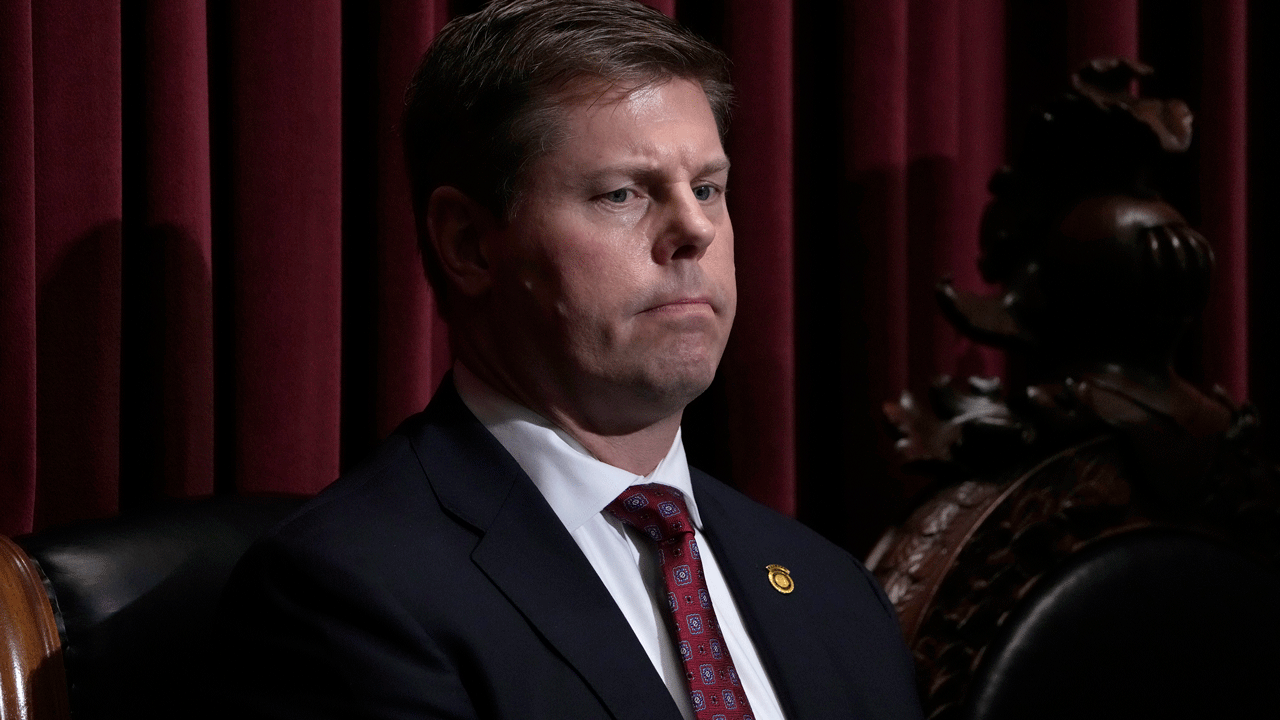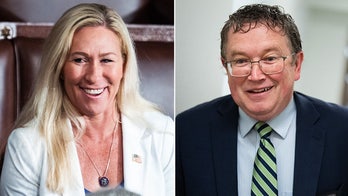Pressure on Bernanke not Easing; Senate Feels Heat on Debt Demands; Confusion Reigns in Libya; Assad Tries to Save His Scalp
Press Won’t Be Gentle With Ben
"It's not the beginning of the Fed tightening, it's the end of the Fed easing.”
-- Laurence Kantor, head of research at Barclays Capital, talking to the Wall Street Journal.
This week is a potential tipping point for the U.S. economy.
First, let’s set the scene.
Skyrocketing prices – especially for energy – and concerns about whether the government will be able to address the untamed federal debt are threatening the already anemic recovery.
On Friday of this week, we will see the estimates on economic growth rates for the first quarter of the year. The widely held expectation is that the number will be very small, probably below the 2 percent needed to just keep the U.S. economy from losing ground. Government economists are already working hard to manage expectations, suggesting that a rate of 1.5 percent – less than half of the growth rate for the last quarter of 2010 – would be attributable to weird weather and the devastation in Japan. It is crucial for the government that the swoon not be attributed to the ever climbing price of food and fuel, for reasons we will explain below.
The other big moment this week will be the first-ever official press conference to be held by a chairman of the Federal Reserve. Ben Bernanke has been much more interested in publicity than his predecessors at the central bank and will continue his star turn by taking questions after reading a statement on the nature of a meeting held with the bank’s top managers.
Everyone already knows what Bernanke will say in his statement: the bank will continue to wind down its program of printing money to buy up government debt – some $900 billion so far – because the economy is showing growth and such extraordinary measures are unnecessary. Bernanke is also expected to say that the bank will continue to set its benchmark interest rate at next to nothing because worries over the puny growth rate outweigh concerns about inflation.
This is the Fed shifting into neutral. Bernanke will not keep hitting the gas by pumping funny money into the economy but neither will he downshift by starting to bump up interest rates. But, like a bearded groundhog casting his shadow on an excitable press corps, the ways in which Bernanke describes this deliberate inaction will be scrutinized by financial types wondering whether we will have six more weeks of economic winter.
This comes at a difficult moment for Bernanke. Opposition to his printing program has grown from conservative circles to become broad sentiment. A damning New York Times Sunday story suggested that the economic benefits of keeping interest rates low by creating an artificial market for government debt have been outweighed by the fact that sloshing all that money around has pushed inflation to the point that consumers have begun to pull back.
Plus, there’s little hope that the end of the Fed’s cash dump will rein in inflation. Markets have likely already discounted the consequences of the end of Bernanke’s green gusher, called “quantitative easing” by those hoping to obscure its nature. Its June conclusion has already baked into the inflationary cake for months as the chairman heralded its summer conclusion in a bid to quiet critics. But prices have continued to rise on staple goods like gas and grain and havens from inflation like gold and silver.
Team Bernanke holds that the weakening of the dollar’s buying power is primarily the result of increasing global demand and the rascality of speculators, not the conjuring of nearly $1 trillion of greenbacks. The central bank is now the world’s largest holder of government debt and the dollar is at its weakest point in recent memory, but we are told that the two things are largely unrelated. But basic economics tell us that in general, the more dollars there are, the less they are worth and the more of them you need to buy a gallon of regular unleaded.
The government has run out of ways to juice the economy since the stimulus bubble of the previous two years was popped in the midterm elections. That means that the Fed’s ability to literally make money is about the only tool left to try to stimulate consumer demand by injecting liquidity into markets. The downside to that is that currency tricks drive up prices and it’s the rising prices that are killing off the muted recovery born of all that borrowed stimulus spending.
A stagnant economy with still rising prices does not make for the kind of political climate in which a president would like to make his case for more spending and a less aggressive approach for dealing with the national debt. That’s an approach that works when people are in a panic but will only annoy voters experiencing malaise.
Alphonse and Gaston Routine on Debt
“And that's our problem with where we are today. The president doesn't have a plan that will get 60 votes in [the Senate]. The House doesn't have a plan that will get 60 votes.”
-- Sen. Tom Coburn, R-Okla., on “Meet the Press.”
Not only does the White House want Congress to pass a politically toxic increase to the nation’s $14.3 trillion borrowing limit but also want the Republican controlled House to take the lead on the process.
But it is becoming increasingly obvious that it will be up to the Democratically controlled Senate to develop a plan -- whether that plan is grand bargain like the Gang of Six plan to enact the Simpson-Bowles debt commission’s recommendations or small-fry swap of cuts for more borrowing power.
Senate Democrats continue to pipe up with promises that they won’t expand borrowing power without some serious concessions on controlling spending. With a narrowly divided Senate and Republicans in the upper chamber so far united in opposing any increase without substantial spending reforms, it falls to Majority leader Harry Reid to show his cards.
If the Gang of Six plan is not met with wide acclaim – like 60 votes wide – in the Senate, Reid will have some ugly work to do in finding the votes he needs to pass any debt increase. Not only are there at least a half-dozen endangered Senate Democrats who are terrified of a debt vote ahead of the 2012 elections, but also the Senate has become very protective and proud of this Gang of Six effort. Members are not going to let Reid punt on this.
Plus, the only thing that could likely get through the House right now would be so hardcore – say tied to a balanced-budget amendment and with massive slashed to 2012 spending – that Obama would veto it. But if the Senate passes a plan conditioned on the Simpson-Bowles proposal (especially if the concept of a tax simplification, rather than Obama’s preferred rate increase, is preserved) there is probably a bipartisan coalition large enough to pass a debt increase in the House.
House Republicans tell Power Play that they are very content to let the Senate go first on the deal. Senate Democrats, meanwhile, tell FOX News that they are lighting candles for the Gang of Six in hopes that the looming fiscal crisis can be resolved.
Defining Down Victory in Libya
“I don't think the president really clearly knows what to do, and I think he is content here to have failure be an option.”
- FOX News Senior Political Analyst Brit Hume on “FOX News Sunday with Chris Wallace” discussing the Libyan civil war.
Is NATO trying to assassinate Col. Muammar al-Qaddafi? Or just depose him into a comfortable exile? Or just prevent the murder of innocents? Or install the tribal groups and Islamists with which his armies are at war intro power of the deeply divided nation? Or maintain a stalemate and ceasefire?
Depending on whom you talk to in the NATO community, every one of these might me met with a “yes” (or a “oui.”).
Interventionists in the U.S. are calling for America to reengage and deliver a decisive blow to the Qaddafi regime by killing the dictator – that half-measures will produce a long-term danger. Opponents of American involvement say it’s time for the U.S. to get out since Qaddafi is sitting on purloined billions and the rebels have failed to achieve military success or popular support outside of their tribal and ideological origins.
President Obama is looking to take a little from column A and a little from column B.
He is slightly expanding the U.S. role by adding some more firepower in the form of drone bombers since the Euros lack the firepower to back up their demands for deeper involvement. One tends to think, for example, that it was U.S. ordnance that blew up Qaddafi’s official compound in Tripoli today simply because the attack was so effective.
The threat from the Qaddafi government is that it will let irregular forces from local tribes go to work on the insurgents still holding on in Mistrata, the only rebel stronghold outside of the eastern part of the nation.
Like Saddam Hussein in Iraq, Qaddafi has kept tribal and sectarian hatreds under control through the liberal exercise of terror and oppression. The warning from the government is that if they are forced to abandon their siege of Misrata, local guerrillas might turn to butchery against the outsiders pinned down there.
Much of this is likely a lie to excuse future atrocities, but there is some basis in truth in that the groups described bewilderingly as “pro-Qaddafi” and “pro-Democracy” are often more anti having the other tribes in charge of the country.
Assad Takes His Chances on a Crackdown
“Under Bashar, the Syrians slipped into a relationship of some subservience to the Iranians—yet other nations were always sure that Syria could be "peeled off" from Iran, that a bargain with Damascus was always a day, or a diplomatic mission, away. It had worked this way for Assad senior, as American statesmen including Richard Nixon and Bill Clinton were confident that they could bring that man, at once an arsonist and a fireman in his region, into the fold.”
-- Fouad Ajami in a Wall Street Journal column, “The Freedom Movement Comes to Syria.”
Having surveyed the state of other regimes in the region, Syrian strongman Bashar Assad has seemingly determined that he is better off trying to fight his way out.
In Egypt, Hosni Mubarak seems headed for the gallows if he lives long enough to stand trial. His son and successor will also likely be strung up as the military and Islamist coalition now ruling the country looks to appease an increasingly anxious public.
In Yemen, President Ali Abdullah Saleh is trying to avoid a similar fate for him and his family by negotiating an end to his reign. But protestors seem determined to deny him any immunity and want to give him the Mussolini treatment.
And those are the Western allies!
Looking better is the route chosen by Western frenemy Muammar al-Qaddafi, who is now engaged in the international equivalent of a standoff with police.
Assad’s grip on power looks even more tenuous than Qaddafi’s since his Iranian-backed government is based on having a Shiite minority rule a Sunni majority, a twist on the rest of the region. If Assad tried to talk his way out of this, what the oppressed people of his country would do to him and his ruling claque would make the antics in Yemen and Egypt look like the treatment of a Hollywood starlet in Los Angeles County Superior Court.
Assad is killing scores of protesters and jailing troublemakers, and may hold on a bit longer. But the question is how the Iranians react. The uprisings in the region have so far been all good news for them, empowering Islamists and deposing or embattling U.S. allies. Now, one of their own finds himself in trouble.
The Iranians can be expected, though, to try to exploit this just as they have the others, and the opportunities are fairly substantial. A civil war in Syria would provide an opening to arm Hezbollah and Hamas and perhaps even carve out another little rogue state next door to Israel.c After all, the Assad family’s strategy of stringing the West along with promises of reform and peace tended to slow down Iran’s more radical ambitions for the region.




